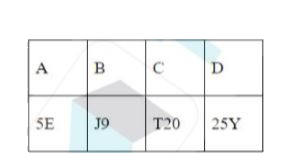Find the odd. term out giving reasons.
Endoplasmic reticulum, Chloroplast, Chromoplast, Leucoplast
To find the odd term out among the given options: Endoplasmic reticulum, Chloroplast, Chromoplast, and Leucoplast, we can follow these steps:
Step 1: Identify the nature of each term
- Endoplasmic Reticulum (ER): A cell organelle found in both plant and animal cells. It is involved in the synthesis of proteins and lipids.
- Chloroplast: A cell organelle found only in plant cells. It is responsible for photosynthesis, converting light energy into chemical energy.
- Chromoplast: A type of plastid found in plant cells that contains pigments, primarily responsible for the colors of fruits and flowers.
- Leucoplast: Another type of plastid found in plant cells, mainly involved in the storage of starches, oils, and proteins.
Step 2: Compare the terms
- The Endoplasmic Reticulum is present in both plant and animal cells, making it a general organelle.
- The Chloroplast, Chromoplast, and Leucoplast are all types of plastids that are found exclusively in plant cells.
Step 3: Determine the odd one out
Since the Endoplasmic Reticulum is found in both plant and animal cells, while the other three (Chloroplast, Chromoplast, and Leucoplast) are only found in plant cells, the odd term out is:
Endoplasmic Reticulum
Step 4: Provide reasons
The reason for this classification is that the Endoplasmic Reticulum serves a fundamental role in both types of cells (plant and animal), while the other three are specialized organelles that only function in plant cells.
Final Answer
The odd term out is Endoplasmic Reticulum because it is present in both plant and animal cells, whereas Chloroplast, Chromoplast, and Leucoplast are only found in plant cells.
---
- Endoplasmic Reticulum (ER): A cell organelle found in both plant and animal cells. It is involved in the synthesis of proteins and lipids.
- Chloroplast: A cell organelle found only in plant cells. It is responsible for photosynthesis, converting light energy into chemical energy.
- Chromoplast: A type of plastid found in plant cells that contains pigments, primarily responsible for the colors of fruits and flowers.
- Leucoplast: Another type of plastid found in plant cells, mainly involved in the storage of starches, oils, and proteins.
- The Endoplasmic Reticulum is present in both plant and animal cells, making it a general organelle.
- The Chloroplast, Chromoplast, and Leucoplast are all types of plastids that are found exclusively in plant cells.
Since the Endoplasmic Reticulum is found in both plant and animal cells, while the other three (Chloroplast, Chromoplast, and Leucoplast) are only found in plant cells, the odd term out is:
The reason for this classification is that the Endoplasmic Reticulum serves a fundamental role in both types of cells (plant and animal), while the other three are specialized organelles that only function in plant cells.
The odd term out is Endoplasmic Reticulum because it is present in both plant and animal cells, whereas Chloroplast, Chromoplast, and Leucoplast are only found in plant cells.
Topper's Solved these Questions
- CELL DIVISION AND CELL CYCLE BOOK - PEARSON IIT JEE FOUNDATIONCHAPTER - CELL DIVISION AND CELL CYCLE EXERCISE - ASSESSMENT TESTS (Answer the following questions)
2 Videos
- CELL DIVISION AND CELL CYCLE BOOK - PEARSON IIT JEE FOUNDATIONCHAPTER - CELL DIVISION AND CELL CYCLE EXERCISE - ASSESSMENT TESTS (Select the correct alternatives)
10 Videos
- CELL-THE BASIC UNIT OF LIFEBOOK - PEARSON IIT JEE FOUNDATIONCHAPTER - CELL-THE BASIC UNIT OF LIFEEXERCISE - MASTERING THE CONCEPTS (Assertion and Reasons) (Choose the correct option)
5 Videos
Similar Questions
Knowledge Check
Find the odd one out :
ACaecumBNictitating membraneCCoccyxDSacrumFind the odd one out :
AAspergillosisBPullorumCFavusDThrushFind the odd one out .
 ACBACBDD
ACBACBDD

